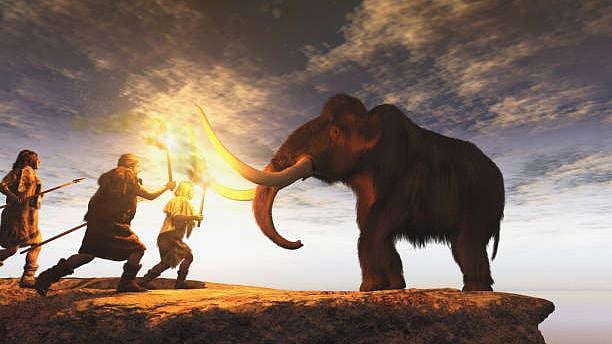The Ice Age is said to have begun approximately 2.4 million years ago and lasted until 11,500 years ago when the earth was covered in polar ice sheets and alpine glaciers. Over the years, remains of animals and distinct humans have been found. Recently, a research team in UK has found the oldest human DNA from the Ice Age.
It is touted to be about 27,000 years old, when Britain's two thirds of the Isles were covered by glaciers, which made them unsuitable for human habitation.
But as the climate changed, it became a home for new fertile soil. Now researchers and archaeologists are trying to figure out the stories of the ancient people who migrated during the ice age to find a region that became a veritable mix of civilisations.
The recent human genomes found are believed to be from either Britain orIreland,d as they point out two different origin stories dating back in the European mainland.
The remains found from Gough's Cave are more likely to have a link with the ancestors from Spain or Belgium. The other remains found from Kendrick's Cave show the link to Italy.
Both human genomes that were found tell us that they were alive about 13,500 years ago. That is just a few thousand years after the region was turned under the sheet of ice.
About the human remains found:
The remains from Gough's Cave are said to be the oldest of the two remnants found, and it is believed that they died around 15,000 years ago. It is also believed that the ancestors of these must have joined the migration movement from northwest Europe.
Remains found from Kendrick's Cave were said to be alive a few thousand years after that, and their ancestors probably migrated from near east Britan about 14,000 years ago.
The land of Britain and the Irish ice sheets virtually disappeared around 16,000 years ago, as the fossils found from that time are scarce, and the other remnants found are said to date back about 15,000 years ago, centuries before Britain's climate began to warm.
Who were these people and where did they come from?
According to an archeologist, the 'Cheddar Man' fossils found date back to about 10,500 years ago, and these were the oldest remains found in England.
The features of these humans were said to be bdark-skinneded with blue eyes, which clearly states that this population had yet to adapt to the colder climate.
The researchers are hoping to find a connection between the recent and the old remains. The newly discovered evidence suggests that Britain had different cultural as well as genetic characteristics. There are distinct difference between the diets of the two remains found. The Gough Cave shows signs of both animals and human bones, and a human skull was seen in a shard of a cup, possibly for cannibalistic purposes.
On the other hand, the remains from Kendrick's cave show the traces of eaten marine and freshwater fish and mammals.










